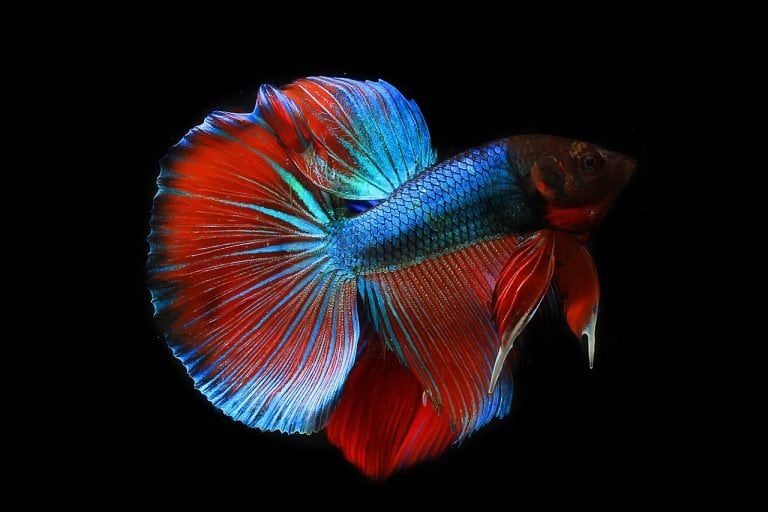Greetings! Are you the proud owner of a magnificent goldfish? Then you surely want to keep your scaly friend healthy and thriving. However, one of the challenges you might face is the dreaded scale fungal infections. These pesky little organisms can wreak havoc on your goldfish’s scales, causing discomfort and even danger to its overall health. But fear not, as we are here to help you learn how to prevent such infections and keep your goldfish in top form.
It is crucial to understand that scale fungal infections can lead to severe complications if not treated promptly. On the bright side, with proper care and prevention measures, you can safeguard your goldfish from this troublesome condition. Let’s explore some effective tips and tricks to ensure your scaly companion remains fungus-free!
Key Takeaways:
- Regular maintenance: Regularly clean the goldfish tank and maintain proper water parameters to prevent fungal infections.
- Monitor water quality: Keep a close eye on the water quality by testing it regularly and ensuring optimal conditions for the goldfish.
- Quarantine new fish: Quarantine new fish before introducing them to the main tank to prevent the spread of potential fungal infections.
Identifying Scale Fungal Infections in Goldfish
While goldfish are generally hardy and resilient, they can be susceptible to various health issues, including scale fungal infections. Identifying such infections early on is crucial in order to provide prompt treatment and prevent the infection from spreading. In this chapter, we will discuss some key information that will help you identify scale fungal infections in your goldfish.
Common Symptoms of Scale Fungal Infections
When it comes to scale fungal infections, there are several common symptoms to look out for in your goldfish. These symptoms may vary in intensity depending on the severity of the infection, but it’s important to remain vigilant. The most noticeable sign is the presence of cotton-like patches on the fish’s scales. These patches may be white, gray, or even greenish in color. Additionally, you may observe a change in your goldfish’s behavior, such as decreased appetite, lethargy, or excessive scratching against objects in the aquarium. If you notice any of these symptoms, it’s crucial to take immediate action to ensure the well-being of your goldfish.
Diagnosing Goldfish Scale Fungal Infections
Proper diagnosis is essential to confirm a scale fungal infection in your goldfish. While visual symptoms provide important clues, it is always advisable to consult a veterinarian with expertise in fish care to obtain an accurate diagnosis. Your veterinarian may examine the fish’s appearance, paying close attention to the presence of cotton-like patches on the scales. They may also perform a microscopic examination or culture the affected area to identify the exact fungal species responsible for the infection. Obtaining a proper diagnosis is crucial, as it will help determine the most appropriate treatment strategy for your goldfish.
Strategies for Prevention
While goldfish are generally hardy and resilient, they are still susceptible to fungal infections if proper care is not taken. Fortunately, there are several strategies you can employ to prevent scale fungal infections in your goldfish. By implementing these preventive measures, you can ensure the health and well-being of your beloved aquatic companions.
The Role of Aquarium Maintenance in Preventing Infections
Adequate aquarium maintenance plays a crucial role in preventing scale fungal infections in your goldfish. Regular cleaning and monitoring of the tank conditions are essential steps that you should never overlook. Make sure you maintain proper filtration to keep the water clean and free from harmful bacteria and fungi. Regularly test the water parameters, such as pH and ammonia levels, to ensure optimal conditions for your fish. Additionally, pay attention to any signs of decayed plant matter or uneaten food, as these can release substances that promote fungal growth. By keeping your aquarium clean and maintaining a stable and healthy environment, you significantly reduce the risk of fungal infections.
The Importance of Proper Diet in Fungal Prevention
Providing your goldfish with a proper diet is another crucial aspect of preventing scale fungal infections. A well-balanced and nutritious diet enhances your fish’s immune system, making it more resistant to fungal pathogens. Ensure that you are feeding your goldfish a varied diet consisting of high-quality commercial pellets, fresh vegetables, and occasionally live or frozen foods. Avoid overfeeding, as excess food can accumulate in the tank and lead to the growth of fungi. Remember to regularly check and remove any uneaten food particles to prevent fungal contamination. By providing a nourishing diet to your goldfish, you are equipping them with the necessary tools to fight off fungal infections effectively.
Treatment of Goldfish Scale Fungal Infections
Any goldfish owner understands the importance of providing proper care and attention to their beloved aquatic pets. As part of this responsibility, it is crucial to be aware of potential health issues that can affect goldfish, including scale fungal infections. Fortunately, if your goldfish ever develops such an infection, there are effective treatment options available to help your fish overcome this condition and regain its health. In this chapter, we will discuss the common treatment options for goldfish scale fungal infections and guide you on how to monitor the healing process.
Common Treatment Options
If you notice a goldfish with scale fungal infections, it is important to act promptly to prevent it from worsening and potentially spreading to other fish in the tank. There are several common treatment options available that can help eliminate the fungal infection and restore your goldfish’s scales to their healthy state.
Medicinal Treatments: Depending on the severity of the fungal infection, there are anti-fungal medications specifically formulated for use in aquariums. These medications usually come in liquid or powder form, making them easy to administer in your goldfish tank. Follow the instructions provided by the manufacturer carefully to ensure correct dosage and duration of treatment. It is important to note that while these medications can be effective, they may also have side effects, so it is crucial to closely monitor your goldfish during the treatment process.
Bath Treatments: Some fungal infections may require more intensive treatment measures, such as bath treatments. These treatments involve creating a separate bath for your goldfish and adding anti-fungal agents to the water. Ensure you follow the recommended dilution ratios and exposure duration to prevent any harm to your goldfish. Bath treatments can be particularly effective in targeting the fungal infection directly.
Monitoring the Healing Process
As you start the treatment process for your goldfish’s scale fungal infection, it is essential to monitor the healing process closely. By regularly observing your goldfish, you will be able to gauge the effectiveness of the chosen treatment and make necessary adjustments if needed.
Improvement indicators: Look for signs of improvement, such as a reduction in the size or number of the affected spots, a decrease in redness or inflammation, and the regrowth of healthy scales. These positive changes indicate that the treatment is working, and your goldfish is on its way to recovery.
Alert for complications: While treating your goldfish’s scale fungal infection, it’s important to be vigilant for any warning signs that could indicate complications. If you notice an increase in lethargy, loss of appetite, excessive scratching, or any new symptoms, it is crucial to seek professional advice immediately. Acting promptly can prevent any further damage to your goldfish’s health and increase the chances of successful treatment.
Remember, addressing goldfish scale fungal infections promptly and following the appropriate treatment options is key to restoring your goldfish’s health. With proper care, attention, and monitoring, your goldfish will soon be back to its vibrant and healthy self.
Conclusion
By following these preventive measures, you can effectively safeguard your goldfish from scale fungal infections. Regularly maintaining clean water with proper filtration and temperature control, providing a well-balanced diet, and minimizing stress in your goldfish’s environment are key to preventing scale fungal infections. Additionally, ensuring proper quarantine procedures for any new additions to your aquarium and practicing good hygiene, such as washing your hands before handling your fish, can further reduce the risk of infection. By taking these steps, you will significantly enhance the overall health and well-being of your goldfish.





